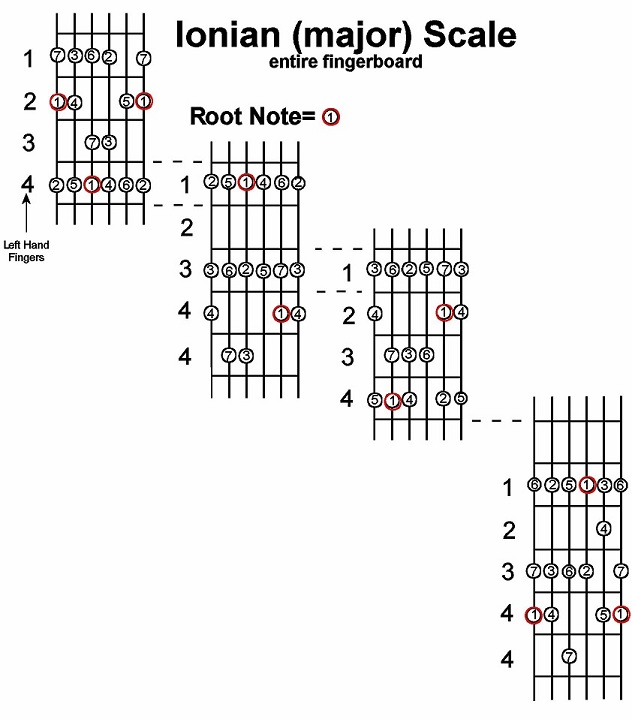Hi Julian,
I must respectfully disagree with you about a few points.
— Begin quote from ____
Learning to read music is, at best, a roundabout way to ‘memorize’ the fretboard.
— End quote
If you are looking to memorize where the notes are on the fingerboard, it certainly is not a roundabout way to memorize.
— Begin quote from ____
And learning with standard notation is counter-productive. This is because standard notation doesn’t indicate which string and fret, among the multiple fretboard locations in which a particular note can be found, is the best.
— End quote
Of course, this depends on what you are reading. If you are reading a flute part, it will not contain any markings for a guitarist to use. But if you are playing classical guitar, fingerings (including which string and which finger to use on that string) are very often included in standard notation.
— Begin quote from ____
For an adult who plays only the guitar, learning guitar with tablature is more efficient than using standard notation.
— End quote
It may be easier to learn at first, but I do not believe it is better in the long run, especially when you move to styles or tunes of music that may not be tabbed. In fact, in many ways tablature is just a stepping stone to learning how to read notation.
— Begin quote from ____
It would be nice if all kids had a musical education that included standard notation. But in this day and age, that’s not common. Standard notation is worthwhile and perhaps even necessary if you’re a multi-instrumentalist or if you want to understand theory. But for learning a single fretted instrument, it’s a luxury not a necessity.
— End quote
Actually, learning to read standard notation is more accessible now than it ever has been. Go check out the musictheory.net website and you will find a simple method and interactive method for learning how to read notation and basic music theory. I teach a class of middle schoolers this information within a dozen or 2 classes, with no outside homework.
And I cannot agree that learning to read music is a luxury. It may not be necessary, but I would not go so far as to call it a luxury. Wes Montgomery could not read music, but most folks will never have his talent or ability. And you can learn all you need to know from using your ears, but why not learn to read music and speed up the process.
I routinely teach students all the notes in every position on the fingerboard in a matter of about 8 minutes. It takes another 6 minutes to show them where those notes are on the staff and how they correlate. At that point, they know where any note they see on the staff is played on the fingerboard. Don’t get me wrong, they are not stellar sight readers at that point, they just know where to find the notes they see on the staff. It takes practice to teach your fingers what your mind knows.
One other point, I have a very good friend who sight reads any and all music, like you or I might play a C chord. You can put a full orchestra score in from of him and he will sight reduce that score correctly for the guitar on first reading, often at tempo. Other than the fact that it is an impressive skill to witness, he is unlimited by any constraints on the choice of musical style or what instrument that music was originally written for. I know that he would not agree that learning to read music for a guitarist is a luxury, it is yet another tool to make you a better musician.
Can you be a great musician without learning to read music? Sure, but sometimes it is easier to set down the butter knife and use a screwdriver.




